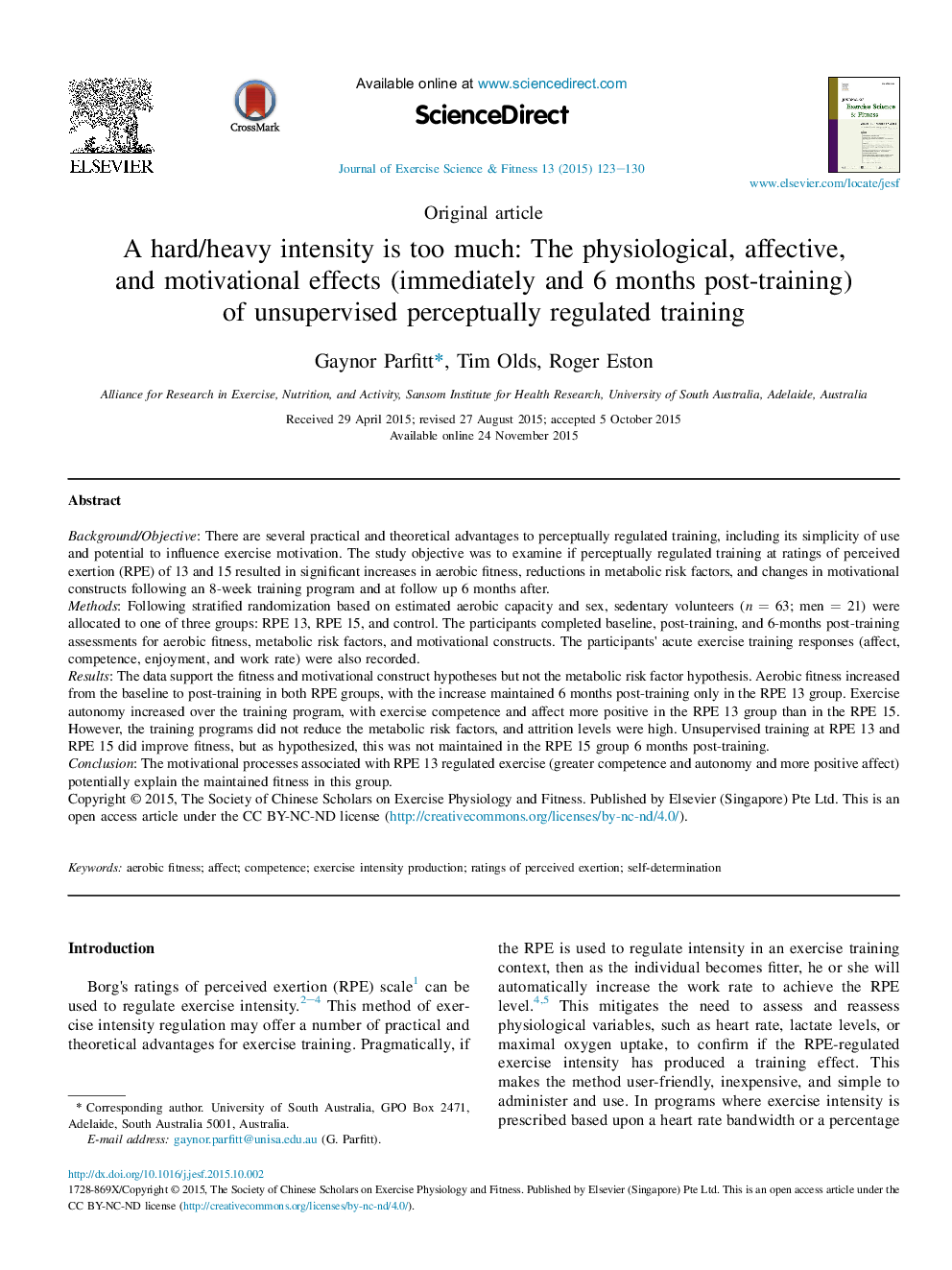| کد مقاله | کد نشریه | سال انتشار | مقاله انگلیسی | نسخه تمام متن |
|---|---|---|---|---|
| 2739607 | 1148429 | 2015 | 8 صفحه PDF | دانلود رایگان |
Background/ObjectiveThere are several practical and theoretical advantages to perceptually regulated training, including its simplicity of use and potential to influence exercise motivation. The study objective was to examine if perceptually regulated training at ratings of perceived exertion (RPE) of 13 and 15 resulted in significant increases in aerobic fitness, reductions in metabolic risk factors, and changes in motivational constructs following an 8-week training program and at follow up 6 months after.MethodsFollowing stratified randomization based on estimated aerobic capacity and sex, sedentary volunteers (n = 63; men = 21) were allocated to one of three groups: RPE 13, RPE 15, and control. The participants completed baseline, post-training, and 6-months post-training assessments for aerobic fitness, metabolic risk factors, and motivational constructs. The participants' acute exercise training responses (affect, competence, enjoyment, and work rate) were also recorded.ResultsThe data support the fitness and motivational construct hypotheses but not the metabolic risk factor hypothesis. Aerobic fitness increased from the baseline to post-training in both RPE groups, with the increase maintained 6 months post-training only in the RPE 13 group. Exercise autonomy increased over the training program, with exercise competence and affect more positive in the RPE 13 group than in the RPE 15. However, the training programs did not reduce the metabolic risk factors, and attrition levels were high. Unsupervised training at RPE 13 and RPE 15 did improve fitness, but as hypothesized, this was not maintained in the RPE 15 group 6 months post-training.ConclusionThe motivational processes associated with RPE 13 regulated exercise (greater competence and autonomy and more positive affect) potentially explain the maintained fitness in this group.
Journal: Journal of Exercise Science & Fitness - Volume 13, Issue 2, December 2015, Pages 123–130
